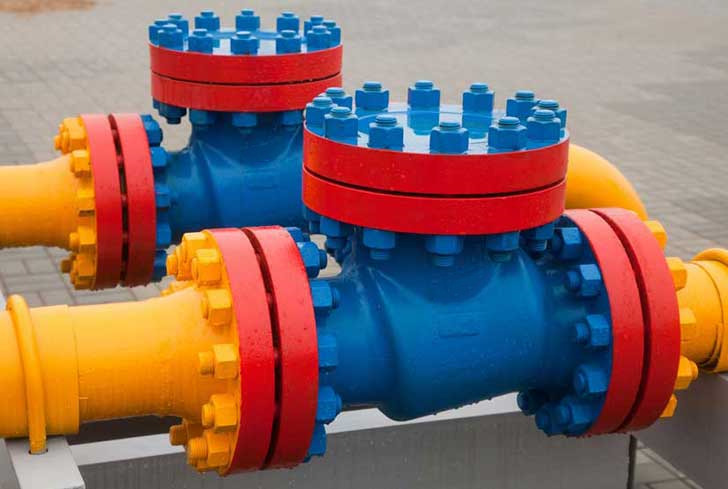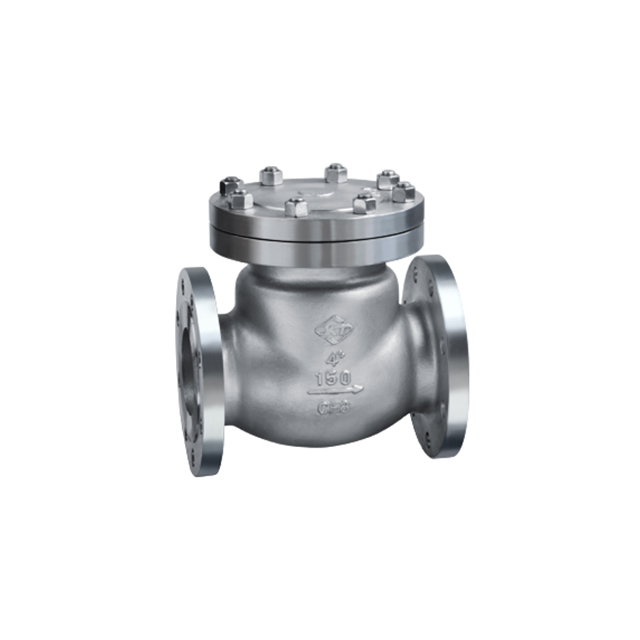Table of Contents
Toggle
Introduction
Swing check valves are crucial components in fluid control systems, designed to prevent backflow and ensure the unidirectional flow of fluids. These valves are mostly employed in various industries to maintain the integrity and efficiency of pipelines. In this blog, we will delve into swing check valves, including their definitions, types, working principles, and key features. This information will help you gain a better understanding of swing check valves and their applications in different industries.
Definition and Types of Swing Check Valves

Swing check valves are mechanical valves that utilize a swinging disc or flap to control the flow of fluids. The disc swings freely on a hinge or pivot, allowing flow in one direction and preventing backflow in the opposite direction. There are two main types of swing check valves:
- Horizontal Swing Check Valve: In a horizontal swing check valve, the disc swings on a horizontal axis perpendicular to the flow direction. This type of valve is commonly used in applications where the flow direction is horizontal.
- Vertical Swing Check Valve: In a vertical swing check valve, the disc swings on a vertical axis parallel to the flow direction. These valves are suitable for applications where the flow direction is vertical or inclined.
Working Principles of Swing Check Valves
Swing check valves operate based on the principle of the swinging disc, which moves freely to allow or block the flow of fluids. When the fluid flows in the desired direction, the pressure pushes the disc open, allowing the fluid to pass through. However, when there is a backflow or a reverse flow, the disc swings back into position, creating a seal and stemming the fluid from flowing in the opposite direction.
Key Features and Advantages of Swing Check Valves
Swing check valves offer several features that make them advantageous in fluid control applications. Some key features include:
Effective Flow Control
Swing check valves provide efficient fluid flow control, allowing for unidirectional flow and preventing backflow.
Low-Pressure Drop
These valves have a minimal pressure decline through the valve, assuring effective discharge and lowering energy usage.
Easy Maintenance
Swing check valves are relatively easy to maintain, as they have a simple design with fewer moving pieces.
Versatility
Swing check valves can handle a broad range of fluids, including liquids, gases, and slurries. They find applications in various industries, such as water treatment, oil and gas, chemical processing, and more.
Applications of Swing Check Valves
Swing check valves find applications in a vast array of industries and systems, including:
- Piping Systems: Preventing backflow in water, gas, and oil pipelines.
- Pumps and Compressors: Protecting pumps and compressors from damage due to backflow.
- HVAC Systems: Maintaining proper airflow direction in heating, ventilation, and air conditioning systems.
- Industrial Processes: Preventing contamination and ensuring proper fluid flow in various industrial processes.
- Automotive and Marine Systems: Regulating fluid flow in engines, transmissions, and other vehicle systems.
Maintenance Considerations
Swing check valves are generally low-maintenance devices, but regular inspections and occasional cleaning are essential to ensure optimal performance and longevity. Periodically check the disc or flapper for wear or damage, and replace it if necessary. Clean the valve body and disc to remove any debris or buildup that could impede proper operation.
Swing Check Valve Installation
Check Valve Size and Condition:
Before purchasing, ensure you know the size and style you need. Check the valve for any damage or irregularities in the edges.
Confirm Placement:
Install the swing-type check valve with the flow arrow in the direction of flow. If it’s a horizontal pipeline, place it in the appropriate direction. For a vertical pipeline, make sure the flow arrow is pointing up.
Attach the Valve:
Depending on the type of valve, either screw it into place or secure the pieces together.
Test the Valve:
After installation, it’s important to test the valve to ensure it functions correctly.
The swing check valve is always installed with the hinge pin placed horizontally and above the pipe centerline to prevent binding, high head loss, or sticking in the open position. For a threaded connection, screw the ends of the valve into the piping.
Conclusion
Swing check valves are essential in fluid control systems, ensuring the unidirectional flow of fluids and preventing backflow. With their effective flow control, low-pressure drop, easy maintenance, and versatility, swing check valves are exhaustively utilized in various industries. Explore the wide range of swing check valves at Xintai Valves to find the perfect valve for your application.









